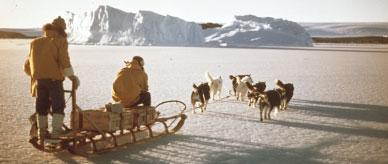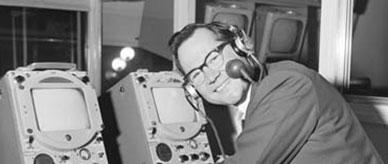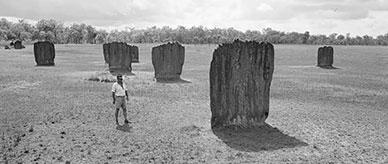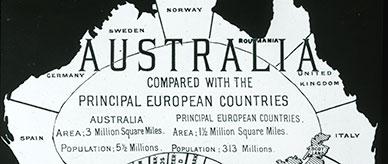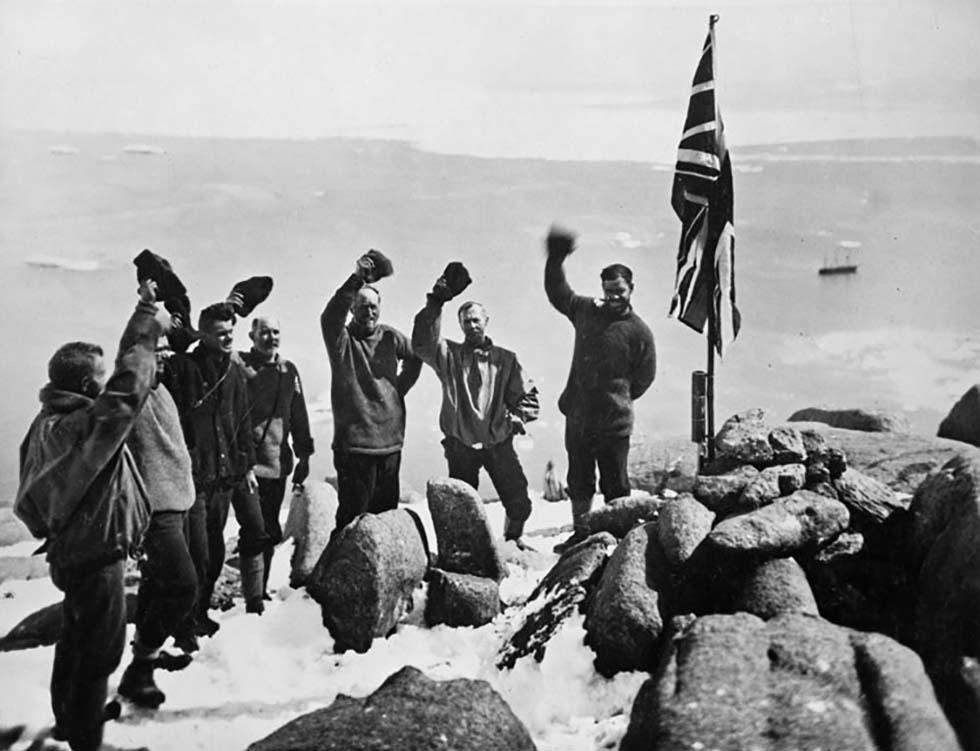


About this record
This is a copy of an original photograph of Sir Douglas Mawson, the distinguished Antarctic explorer and scientist, and other members of the 1929-31 British, Australian, New Zealand Antarctic Expedition (BANZARE), on the heights overlooking Proclamation Harbour in Enderby Land, Antarctica (latitude 65°51'S, longitude 53°41'E). They are cheering as the Union Jack is raised. The expedition's ship, Discovery, can be seen in the background (right).
Educational value
- Depicts members of the 1929–31 BANZARE, which undertook two voyages of scientific and geographic research along the Antarctic coastline from approximately 40°E to approximately 160°E longitude in the summers of 1929–30 and 1930–31.
- Shows Douglas Mawson (1882–1958) at the height of his achievements – having already served with Ernest Shackleton's 1907 Antarctic expedition, he then led the Australasian Antarctic Expedition (1911–14) and the BANZARE (1929–31), and later became Professor of Geology at the University of Adelaide; Mawson's achievements are honoured by the image of his face on Australia's $100 note.
- Shows an important step in the process that led to the Australian Antarctic Territory Acceptance Act 1933, giving control of about 6.5 million square kilometres or 42 per cent of the Antarctic continent to the Commonwealth of Australia – because British dominions such as Australia did not gain full political and foreign policy independence until 1931, Mawson raised the Union Jack and claimed the territory on behalf of Britain, with the understanding that Australia would eventually gain sovereignty over this Antarctic area, which it did in 1933.
- Is a typical example of the skill of Frank Hurley (1885–1962), the official photographer on the expedition's two voyages of research – Hurley was well known for finding good camera angles, and in this case he climbed to a slightly higher position to the right of the men to capture the occasion.
- Shows a canister attached to the flag pole into which a copy of the proclamation claiming possession was placed – an important formality in claiming possession of the territory.
- Shows some of the party looking at the rock cairn around the flagpole – a plaque commemorating the expedition was probably attached to this rock.
- Illustrates an important place in Australia's Antarctic history – the rock cairn and plaque have been protected, along with 59 other monuments, as an Antarctic historic site and monument.
- Illustrates the bleak midsummer environment of Antarctica.
- Indicates the isolation of Antarctica – there are no signs of human habitation or influence on the environment.
- Shows the three-masted wooden ship Discovery in the background – one of the last of this type of ship built in Britain and the first to be constructed specifically for scientific research, the Discovery was launched in 1901, used in Captain Robert Scott's expedition to Antarctica from 1901 to 1904 and, after a long career as a merchant vessel, lent by the British government for this expedition.
- Shows that the Discovery was anchored off the coast – mooring facilities were non-existent and people were forced to row ashore through heavy seas.
- Shows the basic apparel available to explorers of that time – the expedition party are wearing simple jumpers and jackets with wool caps.
Acknowledgments
Learning resource text © Education Services Australia Limited and the National Archives of Australia 2010.
Related themes
Need help with your research?
Learn how to interpret primary sources, use our collection and more.

